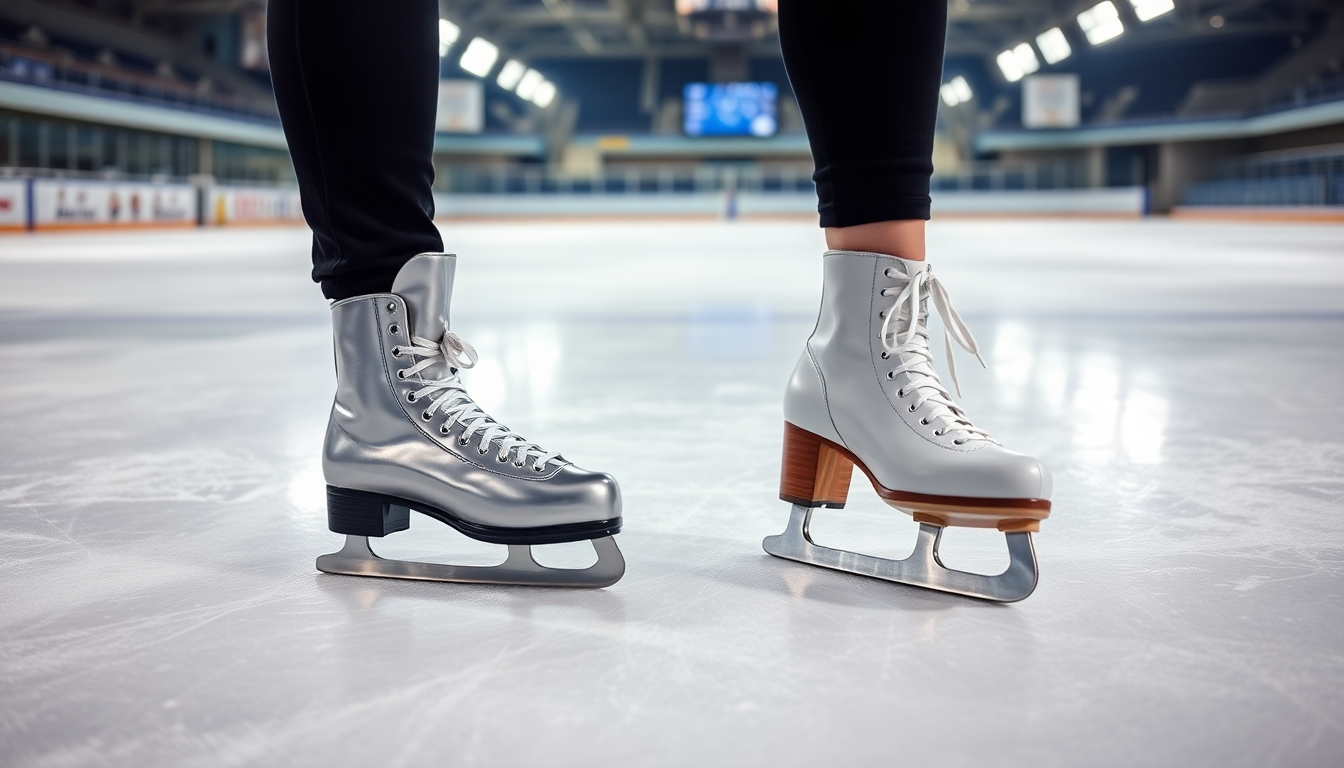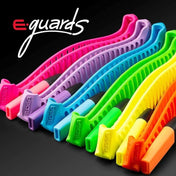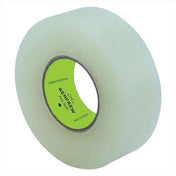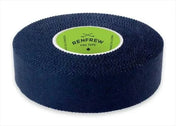As a family-run skate shop nestled inside the Gillingham Ice Rink, we at TheSkateEscape have seen our fair share of skaters come through our doors, each with their own unique skating aspirations. Whether you're a budding figure skater or a hockey enthusiast, the choice between hockey skates and figure skates can be a daunting one. In this blog post, we'll dive into the key differences between these two types of skates, helping you make an informed decision that will set you up for success on the ice.
Key Differences Between Figure Skates and Hockey Skates
Blade Design
One of the most notable differences between figure skates and hockey skates lies in their blade design. Figure skates feature a longer blade with a distinct toe pick, which is essential for executing jumps, spins, and intricate footwork. The toe pick provides extra grip and stability during take-offs and landings, allowing figure skaters to perform their artistic routines with precision and grace.
In contrast, hockey skates have a shorter, curved blade that is designed for quick turns, rapid acceleration, and agility on the ice. The absence of a toe pick on hockey skates makes them better suited for the fast-paced, contact-heavy nature of the sport, where players need to be able to stop, start, and change direction quickly.
Ankle Support
Another key difference between the two types of skates is the level of ankle support. Figure skates typically have a higher boot that provides more support and stability around the ankle, which is crucial for the demands of figure skating. This added support helps figure skaters maintain control and balance during their complex maneuvers.
Hockey skates, on the other hand, have a lower boot that allows for greater mobility and flexibility. This design prioritizes the player's ability to quickly change direction and engage in the physical aspects of the game, rather than the precise control required for figure skating.
Weight
Generally, figure skates tend to be heavier than hockey skates due to the additional materials and construction required to provide the necessary support and stability for figure skating. The extra weight of figure skates can be beneficial for some skaters, as it can help them maintain balance and control during their routines.
In contrast, hockey skates are designed to be as lightweight as possible, allowing players to move quickly and agilely on the ice. The reduced weight of hockey skates helps players accelerate, stop, and change direction with greater ease, which is crucial for the fast-paced nature of the sport.
Intended Use
The fundamental difference in the intended use of figure skates and hockey skates is reflected in their design. Figure skates are optimized for precision, artistry, and the execution of complex jumps and spins, making them the choice for figure skaters who compete in solo or synchronized events.
Hockey skates, on the other hand, are built for the demands of the sport of hockey, where speed, agility, and durability are paramount. These skates are designed to support the quick, powerful movements required for playing hockey, such as rapid acceleration, sharp turns, and sudden stops.
Choosing Skates for Beginners: Figure Skating vs. Hockey Skating
When it comes to choosing between figure skates and hockey skates for a beginner, there are a few key factors to consider:
Interest
The first step is to determine what excites the beginner more – the artistic performance and precision of figure skating, or the fast-paced, team-oriented nature of hockey. This will help guide the decision-making process and ensure the skater is pursuing a sport they are genuinely passionate about.
Goals
Consider the beginner's long-term goals. Are they interested in competing in figure skating events, or do they aspire to play hockey at a recreational or competitive level? Aligning the skate choice with the desired outcome will set the skater up for success.
Physical Traits
Take into account the beginner's build and physical strengths. Some individuals may find the added ankle support of figure skates more comfortable and stable, while others may thrive with the increased mobility and agility of hockey skates.
Practice Environment
Finally, consider the availability of rinks and coaching for each sport in your local area. The accessibility and resources for either figure skating or hockey can play a significant role in the decision-making process.
How the Skates Compare in Performance and Usage
Figure Skating Performance
Figure skates are designed to excel in the execution of precise jumps, spins, and artistic movements. The toe pick on the blade provides the extra grip and stability needed for take-offs and landings, allowing figure skaters to perform intricate footwork and showcase their technical mastery.
Hockey Skating Performance
Hockey skates, on the other hand, are optimized for the fast-paced, agile movements required in the sport of hockey. The shorter, curved blade and lack of a toe pick enable players to rapidly accelerate, execute sharp turns, and stop on a dime – all essential skills for the high-intensity nature of hockey.
Care and Maintenance Tips for Your Skates
Regardless of whether you choose figure skates or hockey skates, proper care and maintenance are crucial for ensuring optimal performance and longevity. Here are some tips to keep your skates in top shape:
Regular Sharpening
Keeping the blades sharp is essential for both figure skating and hockey. Dull blades can compromise control and stability, so be sure to have your skates professionally sharpened on a regular basis.
Dry After Use
Always wipe down the blades and boots after each use to prevent rust and wear. Allowing the skates to fully dry before storing them will help extend their lifespan.
Proper Storage
Store your skates in a dry, well-ventilated place, and use blade guards to protect the edges when not in use.
Check for Damage
Regularly inspect the boots and blades for any signs of wear or damage, and address any issues promptly to avoid further deterioration.
Lacing
Ensure the laces are in good condition and replace them if they start to fray or become worn. Proper lacing is crucial for achieving the right fit and support.
Frequently Asked Questions
Can I use hockey skates for figure skating or vice versa? It's generally not recommended to use hockey skates for figure skating or vice versa. Each type of skate is designed with specific performance needs and movements in mind, making them unsuitable for the other sport.
What are the safety considerations when choosing between figure and hockey skates? When choosing skates, it's essential to ensure a proper fit to prevent injuries. Figure skates should offer strong ankle support, while hockey skates should provide mobility and protection against impacts.
How much should I expect to spend on a quality pair of skates? Quality skates can range from $100 to $500 or more, depending on the brand and level of performance. It's important to invest in well-made skates that will provide the necessary support and durability for your chosen sport.
How do I correctly size figure skates versus hockey skates? Sizing can vary by brand, but generally, figure skates should fit snugly with a bit of room for thick socks, while hockey skates should fit tightly but comfortably to ensure good control.
Which is easier to learn, figure skating or hockey skating? The ease of learning can depend on personal interest and physical ability. Some individuals find figure skating easier due to the added ankle support, while others prefer the agility and speed of hockey skates.
Whether you're drawn to the graceful artistry of figure skating or the fast-paced excitement of hockey, choosing the right skates is crucial for your success and enjoyment on the ice. At TheSkateEscape, we're here to guide you through the process and help you find the perfect pair of skates to suit your skating aspirations.













